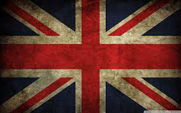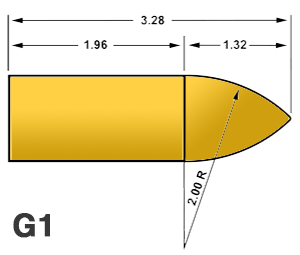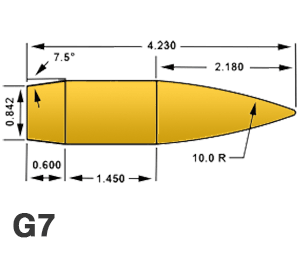 |
Email: mment340@gmail.com Phone: 07876 377609 |
|||||||||||||||||||||
| 1 | ||||||||||||||||||||||
 |
||||||||||||||||||||||
Custom Made Rifle Bullets Hand Crafted in Liverpool, England |
||||||||||||||||||||||
| Tech Talk | ||||||||||||||||||||||
Ballistic Coefficient Just about all manufacturers of rifle bullets quote a Ballistic Coefficient, or BC, for their products. But what does it mean? Put simply, BC is a numeric designation for a projectiles ability to resist atmospheric drag. The BC is a comparative value of the flight characteristics of a bullet versus a given standard shape bullet. Today we see G1 and G7 BC’s being quoted. G1 and G7 designate the standard shape of the bullet being used for comparison purposes. The G1 model is a flat based, rather blunt form, while the G7 more resembles modern target bullet designs, and has a boat tail and more pointed ogive. It doesn’t matter which you use, just make sure you are comparing like with like. |
||||||||||||||||||||||
| Mistral-T | ||||||||||||||||||||||
| Chilcotin Hunter | ||||||||||||||||||||||
| Cariboo Bonded | ||||||||||||||||||||||
| Cariboo Bonnded BT | ||||||||||||||||||||||
| Specialist Bullets | ||||||||||||||||||||||
| Partition Bullets | ||||||||||||||||||||||
 |
||||||||||||||||||||||
 |
||||||||||||||||||||||
| Swaged Lead Bullets | ||||||||||||||||||||||
| Ordering | ||||||||||||||||||||||
| About MME | ||||||||||||||||||||||
| Customer Feedback | You should also be aware that ballistic coefficient is not a set value, it varies depending on velocity, altitude, and climatic conditions – atmospheric pressure, relative humidity and temperature. If you want to see what effect these parameters have on BC, use the BC calculator on the JBM Ballistic website, it can be quite an eye opener. Because of the highly variable nature of ballistic coefficient I won’t quote it for my bullets. I don’t have a dedicated ballistics laboratory, I must do it on the range, so they will vary depending on the weather. My own personal measurements have proven this to be the case; same rifle, same batch of ammunition, same velocity, two different days and two different ballistic coefficients. Which was the correct BC? Both – at the time of measurement. You can have too much BC! A high BC value keeps the tip of the bullet pointing in the direction it left the barrel for longer, even as it starts to descend, which means it will eventually be coming down slightly “belly first”, making it unstable, with attendant loss of accuracy. As the BC increases it becomes more difficult to stabilise the bullet. Lutz Moeller demonstrated this with some of the bullets he made, they had a BC of around 1.4 to 1.5 and were so long it was very difficult to apply the spin and velocity required to stabilise them and they would tumble soon after leaving the barrel. |
|||||||||||||||||||||
| Glossary | ||||||||||||||||||||||
| Tech Talk | ||||||||||||||||||||||
| New Brass | ||||||||||||||||||||||
Boat Tails A boat tail has very little effect on a bullets flight while it is supersonic, but is a major influence once the bullet drops below the speed of sound. While for bullet velocities greater than the speed of sound the tip is significantly more important. This may pose the question "if your bullet is still supersonic when it gets to the target, why do you need a boat tail"?The answer is - you don't. For example short range bench rest shooters use flatbase bullets because they exit the barrel cleaner,and don't suffer the effects of muzzle blast dispersion anywhere near as much as a boat tail bullet would. There are two forms of boat tail; the "traditional" boat tail that all of the major bullet manufacturers make today, and the more modern Rebated Boat Tail (RBT), which is now becoming more prevalent due to custom bullet makers, like myself. The rebated boat tail bullet was first seen, in about 1934, when Lapua introduced their D46 bullet, which they are still making today. The RBT design has some big advantages over the traditional boat tail. Being able to form the boat tail easily has benefits to the shooter, one of which is the base to ogive measurement is extremely consistent, by design. |
||||||||||||||||||||||
The Ogive The ogive (oh-jive) of a bullet is the front portion that tapers to the tip of the bullet. There are two types of ogive, spire points that have straight sides and resemble a church spire, and spitzers. The sides of a spitzer ogive curve from the shank to the tip of the bullet. There is only one form of spire point but the spitzer class can be split up into three different categories; Tangent, Secant and Hybrid. The spire point bullets seem to be dying out these days. The major problem with them is that a secondary pressure wave can form at the juncture between the parallel sided shank and the ogive. This secondary pressure wave can seriously effect the flight characteristics of the bullet. The secondary pressure wave is inconsistent and the formation can be influenced by climatic conditions. Tangent ogive bullets are the easiest to get shooting consistently straight. The curve of the ogive is measured in "calibres", for example; the radius of the curve of my Wimbledon Match .308 bullets is 8 x .308" or 2.464", you will see this described as an 8-S ogive. The lower the number, the shorter the ogive, higher numbers will give you a more pointed bullet. The ogive flows naturally from the shank on a tangent ogive. If you draw a circle then draw a straight line that touches the circumference of the circle, you will have a tangent. The secant ogive is an attempt to defy the laws of physics to reduce drag and increase ballistic coefficient and, to a large extent it works, but there are issues. Secant ogives are typically 14 or even 16-S, and longer than tangent ogives of the same weight. They can also suffer from a secondary pressure wave at the juncture of shank and ogive, if the off-set is too great. Swift Bullets, when they first introduced the Sirocco hunting bullet found that when you sighted your rifle in at low altitudes, then went hunting at high elevations it was possible to miss completely! They corrected this with the Sirocco II bullet. Bullet seating depth and bullet jump to the rifling can be a problem with secant ogive bullets, but once you get it right you will have a bullet with a flatter ballistic curve that will be more accurate at longer range. The hybrid ogive address' the problem of the secondary pressure wave by combining the benefits of both secant and tangent ogives in the same bullet. You have the tangent portion as the ogive meets the bullet shank and then switches to the secant form. This effectively gives you the best of both worlds. Bullet jump and seating depth can still be an issue with hybrids, but not to the same extent as a secant, get it right and you will be impressed. If you want to get really sexy, my Mistral-T range of bullets combine all three forms of ogive, tangent, secant and the ballistic tip is a spire point. All three flow into each othergiving lower drag and higher ballistic coefficient. Note: A truncated cone bullet is just a "cut off" spire point and a round nose, or eliptical bullet is just a very short stubby spitzer! |
||||||||||||||||||||||
©MME Custom Rifle Bullets 2020 |
||||||||||||||||||||||